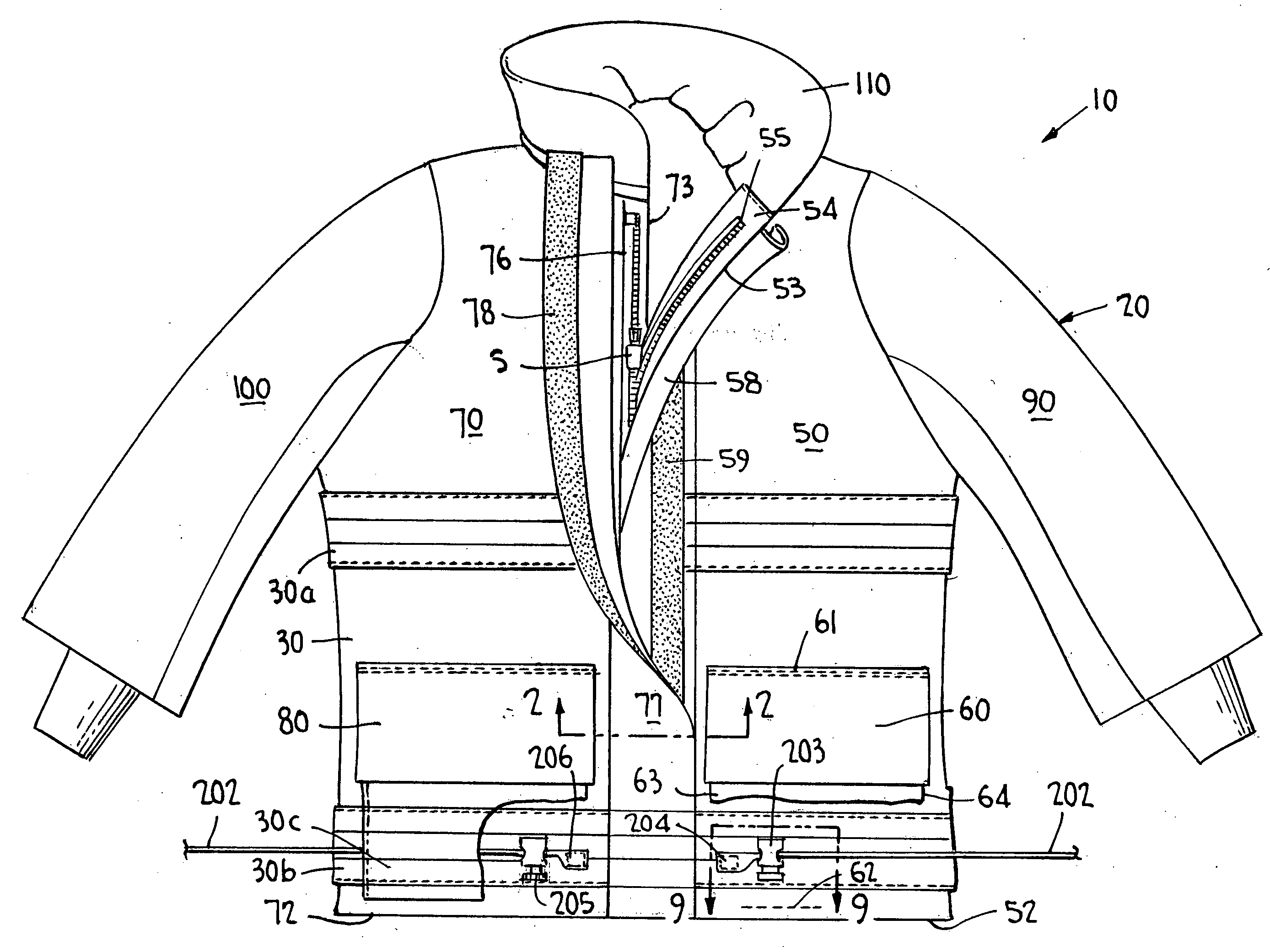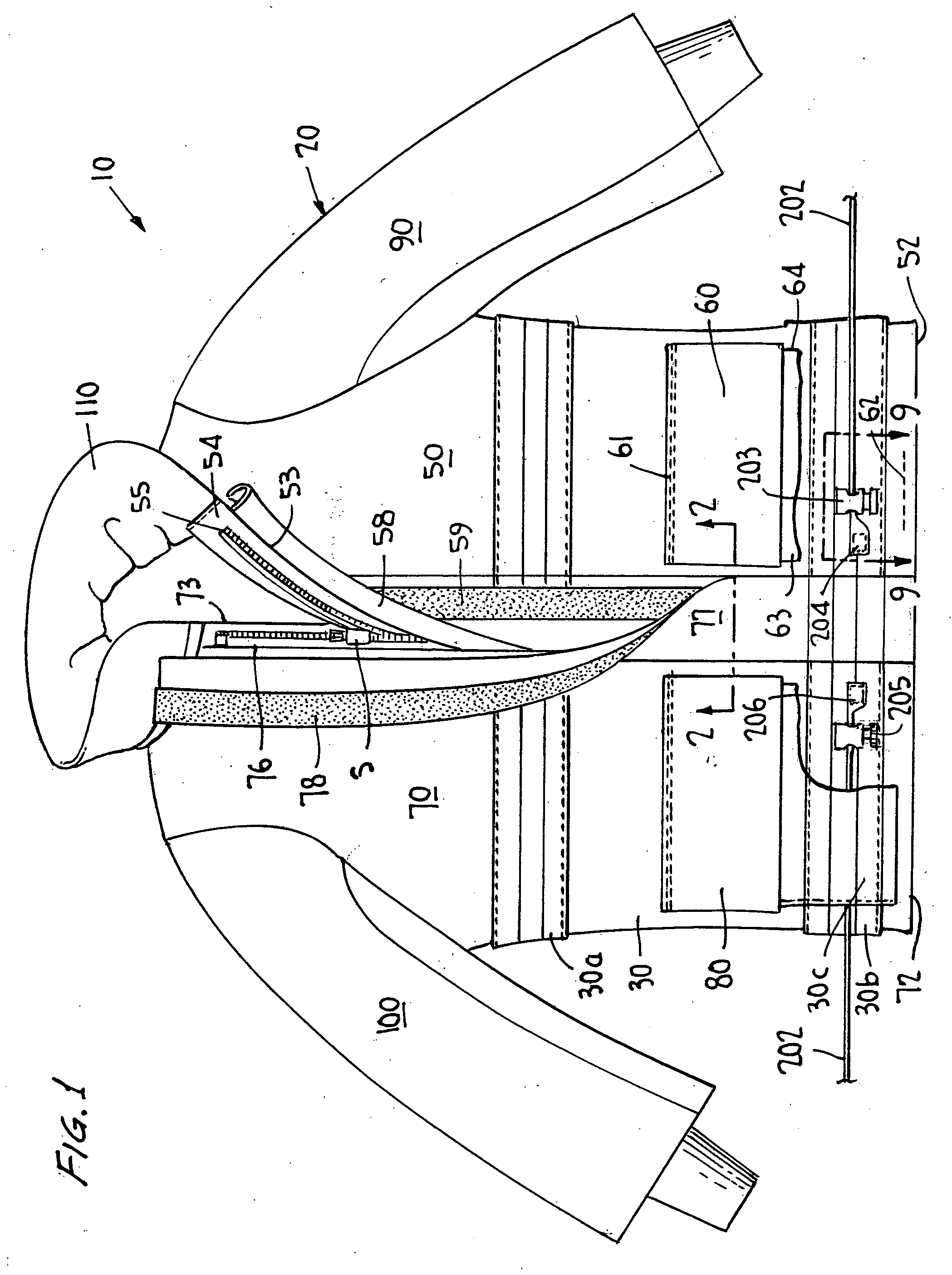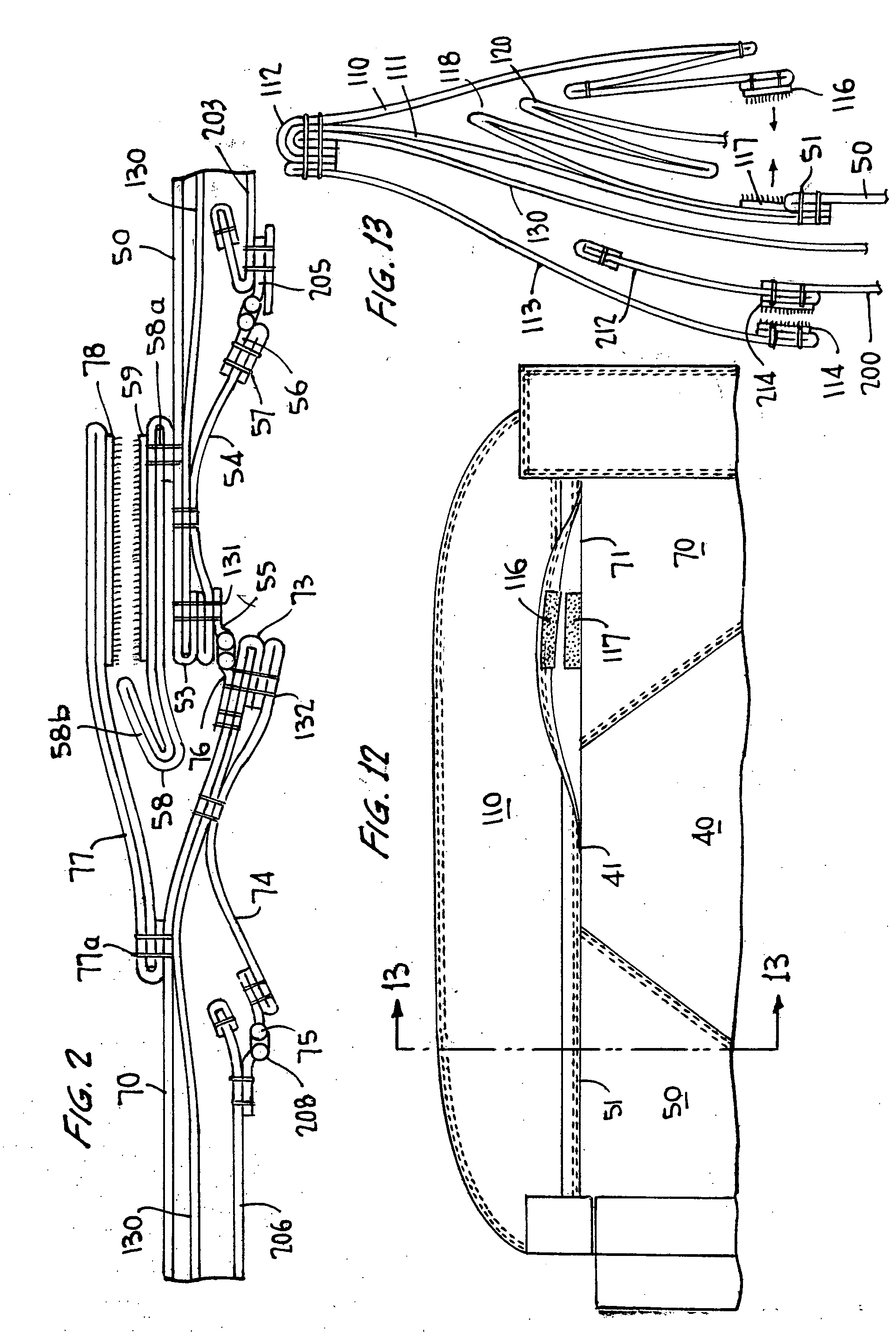Two-piece protective suit for hazardous environments
a protective suit and hazardous environment technology, applied in chemical protection, nuclear engineering, nuclear elements, etc., can solve the problems of contaminated air entering the interior of the coat, not being tailored to prevent, and being very hot insid
- Summary
- Abstract
- Description
- Claims
- Application Information
AI Technical Summary
Benefits of technology
Problems solved by technology
Method used
Image
Examples
Embodiment Construction
[0042] A preferred embodiment of a two-piece protective suit according to this invention is shown in FIGS. 1-26, the coat thereof being shown in FIGS. 1-17 and the trousers thereof being shown in FIGS. 18-26. FIG. 27 shows an alternative embodiment of removable liner that can be used in the outer garment of the trousers.
[0043] The coat, generally labeled 10 in FIG. 1, includes an outer garment 20 (shown separately in FIG. 6) and a removable liner 200 (shown separately in FIG. 4). The outer garment 20 is formed of an outer shell 30 made of a conventional flame-resistant material used in firefighter's clothing, and an inner barrier layer 130 made of a breathable moisture barrier material that resists passage therethrough of hazardous chemical and biological agents in the form of aerosols, vapors or liquids. A suitable barrier material of this type is Crosstech® moisture barrier made by W.L. Gore & Associates of Newark, Del., or more preferably Stedair® 5000 barrier material made by t...
PUM
 Login to View More
Login to View More Abstract
Description
Claims
Application Information
 Login to View More
Login to View More - R&D
- Intellectual Property
- Life Sciences
- Materials
- Tech Scout
- Unparalleled Data Quality
- Higher Quality Content
- 60% Fewer Hallucinations
Browse by: Latest US Patents, China's latest patents, Technical Efficacy Thesaurus, Application Domain, Technology Topic, Popular Technical Reports.
© 2025 PatSnap. All rights reserved.Legal|Privacy policy|Modern Slavery Act Transparency Statement|Sitemap|About US| Contact US: help@patsnap.com



